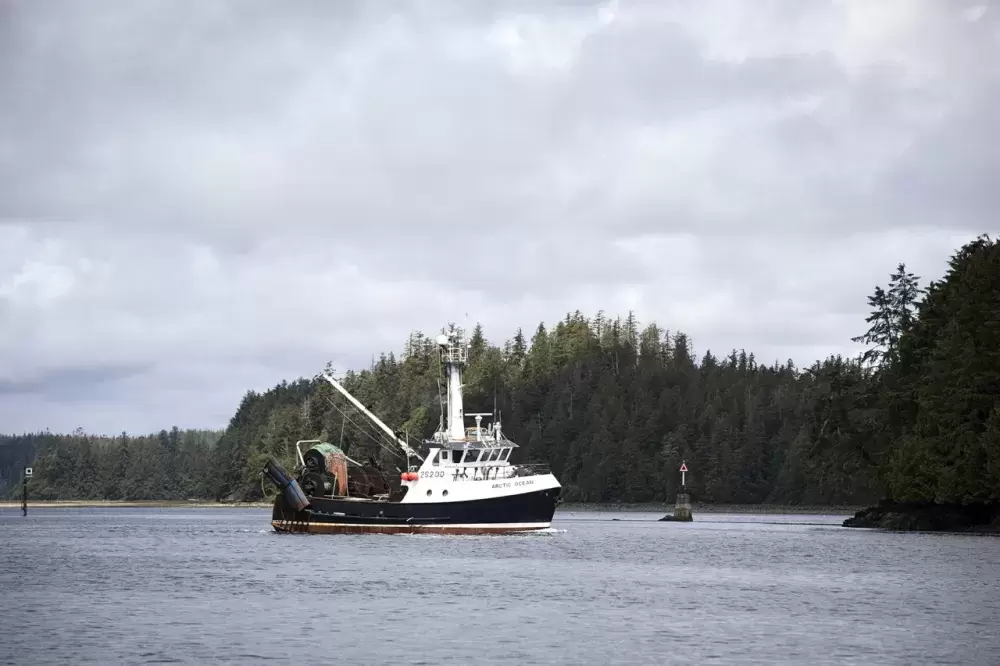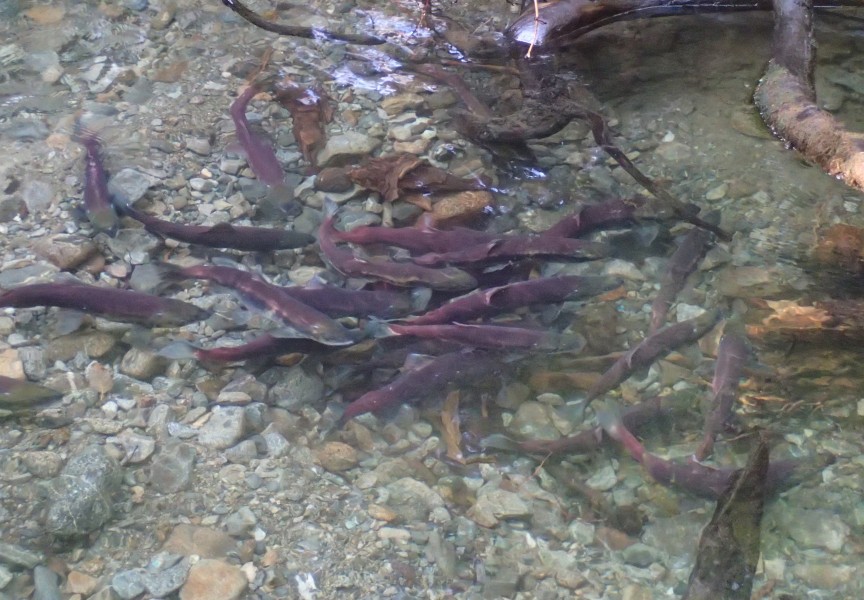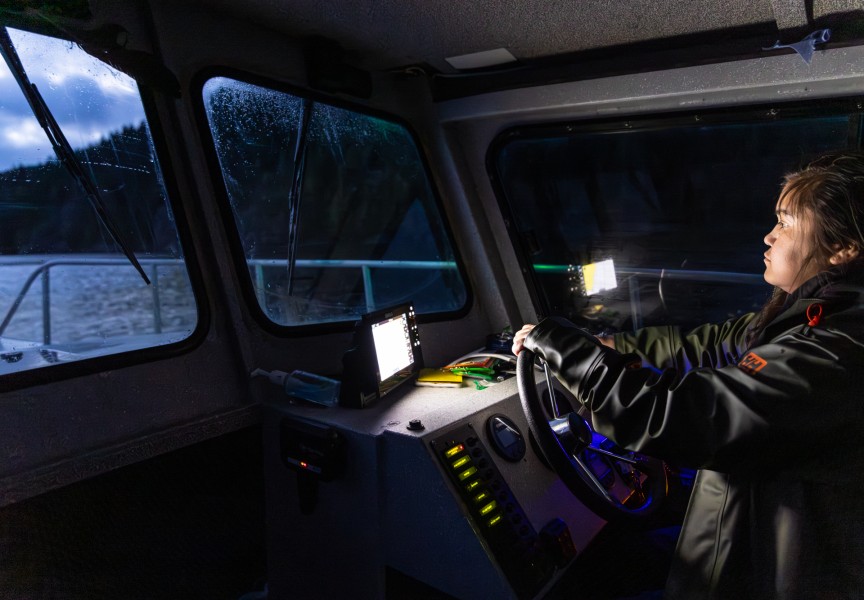Despite continued efforts to push commercial boats out of the industry, many fishermen haven’t sold their licences back to the government, leaving millions in unused funds that were originally intended to help those most affected by the decline of West Coast chinook.
An estimated $8 to 10 million sits in the Pacific Salmon Treaty Mitigation Fund, the remains of $30 million the United States first set aside in 2008 to help those hardest hit by reductions to the chinook harvest. At that time the salmon treaty determined a large cut in chinook fishing was necessary, bringing a 30 per cent reduction for the west coast of Vancouver Island and a 15 cut on southeast Alaska. The Pacific Salmon Treaty was first signed in 1985 to conserve and manage fishing on the West Coast of North America.
Nearly all of this money was designated by Fisheries and Oceans Canada for the voluntary retirement of commercial licences. But after more than a decade, as much as a third of the funds remain unspent.
Vic Amos is among the handful of Nuu-chah-nulth fishermen with an Area G licence to harvest off the west coast of Vancouver Island. He believes that the use of the salmon mitigation fund has failed to serve the intended purpose: to help coastal communities who rely on the economics of salmon.
“Instead of compensating the fishermen from Area G, it was used to buy back licences from all over the B.C. coast,” said Amos. “That’s where the problem came in: the government never came close to spending it on what was originally agreed upon, which was to mitigate the losses of the people who took the reduction of chinook on the west coast of Vancouver Island.”
DFO reports that as many as 164 troll licences in British Columbia have been retired as part of the buy-back program, covering Area G as well as the Strait of Georgia and Haida Gwaii. But Amos has seen a “devastating” effect on coastal communities from commercial boats leaving the industry. This includes the surrounding infrastructure, like locally-based processing plants, and the many coastal residents who rely on such operations for employment.
“Whether you’re native or non-native, we don’t want to give up the small fishing boat fishery on the west coast of Vancouver Island,” said Amos. “Nobody want’s to sell out. We have people who are getting old and grey trying to hang on to this fishery, because it’s a family and a lifestyle fishery. That’s why they haven’t been able to utilize the money, and [DFO] want to buy it back real cheap.”
Uu-a-thluk Program Manager Eric Angel doesn’t believe that many commercial fishers would part with their licence for what they see as a lowball offer from Fisheries and Oceans Canada.
“They’re only buying the licences, not the boats and the gear,” he said. “An area G licence, that’s what he’s earned his living doing. He sells his licence, he’s still stuck with a boat. What’s he’s supposed to do with it?”
With millions still sitting in the Pacific Salmon Treaty Mitigation Fund, representatives from Nuu-chah-nulth nations and the Area G fleet have submitted a proposal to DFO that they hope will change the direction of the direction of the industry. This includes an independent analysis to determine the economic impacts of the 2008 catch reductions on troll fleets and the communities that rely on them, as well as financial compensation for the fishers most impacted by the treaty decision.
“We also want to look really strongly at the potential to create a licence bank, because access to fish on the west coast is absolutely huge,” added Angel. “It’s central to fishers being able to make a viable living out there.”
“The problem with buybacks is that once government buys it back, that licence is gone forever,” said Amos. “Whereas if we do a buyback and it goes into a licence bank, at least it stays here.”
Amos first acquired his commercial license at the age of 19, a time in the early 1970s when this allowed him to venture far beyond the west coast of Vancouver Island.
“It wasn’t called Area G then, there was no areas back when I started,” he said, recalling fishing as far north as the Gulf of Alaska. “When I started you could go fishing up in the Charlottes, you could go up into the gulf, you could go gillnetting, you could do halibut fishing. You could do anything, that’s what your licence was.”
But restrictions tightened over the years for commercial boats. Besides limitations on where they could fish, seasons were cut. Now an Area G licence costs approximately $110,000, plus another $70,000 or so for a boat and the necessary equipment.
The combination of stringent regulations and large costs presents an insurmountable investment for many young fishers considering entering the troll fleet.
“It’s really hard for young people to get into this industry today,” said Amos. “The economics really aren’t there to invest that type of money.”
This led Nuu-chah-nulth and Area G representatives to include in their proposal support for young fishers.
“It’s not that there’s no interest, but they don’t see a future for themselves in it, so we need to come up with some mechanisms to support young fishers to get in,” commented Angel. “It could be mentoring programs, it could be loans, it could be systems with diversifying into different fisheries, it could be a bunch of different things.”
Last year the Area G fleet was allocated less than 15,000 chinook, and since 2015 the fleet’s catch limit has been lower than the sports fishery. But despite the limitations, Amos sees economic opportunity for commercial fishing west of Vancouver Island.
“There is opportunity, but somebody else has to reduce their catch effort,” he said.
“It can be quite profitable, even with reduced stocks and reduced catches,” added Angel. “I see demand for wild caught fish on the west coast of the island where Nuu-chah-nulth are involved, I see demand for that being really strong.”
A decision on the Nuu-chah-nulth-Area G proposal is expected to come from DFO in the fall.







